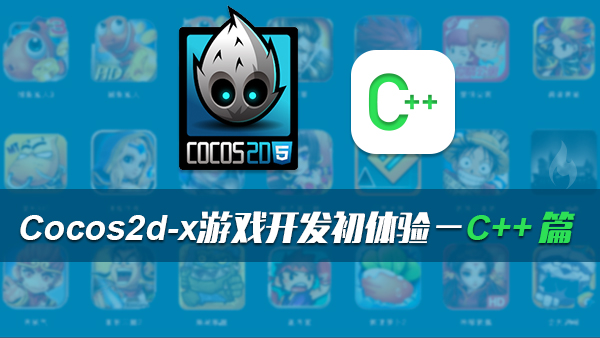RTTI是”Runtime Type Information”的缩写,意思是运行时类型信息,它提供了运行时确定对象类型的方法。
1. typeid函数
1 对于c++的内置数据类型,typeid可以方便的输出它们的数据类型。
#include <iostream>#include <typeinfo>using namespace std;int main(){ short s = 2; unsigned ui = 10; int i = 10; char ch = 'a'; wchar_t wch = L'b'; float f = 1.0f; double d = 2; cout<<typeid(s).name()<<endl; // short
cout<<typeid(ui).name()<<endl; // unsigned int
cout<<typeid(i).name()<<endl; // int
cout<<typeid(ch).name()<<endl; // char
cout<<typeid(wch).name()<<endl; // wchar_t
cout<<typeid(f).name()<<endl; // float
cout<<typeid(d).name()<<endl; // double
return 0;
}2 对于自己创建的类对象,依然可以输出它们的数据类型
#include <iostream>#include <typeinfo>using namespace std;class A{public: void Print() { cout<<"This is class A."<<endl; }
};class B : public A
{public: void Print() { cout<<"This is class B."<<endl; }
};struct C{
void Print() { cout<<"This is struct C."<<endl; }
};int main(){
A *pA1 = new A();
A a2; cout<<typeid(pA1).name()<<endl; // class A *
cout<<typeid(a2).name()<<endl; // class A
B *pB1 = new B(); cout<<typeid(pB1).name()<<endl; // class B *
C *pC1 = new C();
C c2; cout<<typeid(pC1).name()<<endl; // struct C *
cout<<typeid(c2).name()<<endl; // struct C
return 0;
}3 RTTI 核心
#include <iostream>#include <typeinfo>using namespace std;class A{public: void Print() { cout<<"This is class A."<<endl; }
};class B : public A
{public: void Print() { cout<<"This is class B."<<endl; }
};int main(){
A *pA = new B(); cout<<typeid(pA).name()<<endl; // class A *
cout<<typeid(*pA).name()<<endl; // class A
return 0;
}分析:
我使用了两次typeid,但是两次的参数是不一样的;输出结果也是不一样的;当我指定为pA时,由于pA是一个A类型的指针,所以输出就为class A * ;
当我指定*pA时,它表示的是pA所指向的对象的类型,所以输出的是class A;
所以需要区分typeid(*pA)和typeid(pA)的区别,它们两个不是同一个东西;
但是,这里又有问题了,明明pA实际指向的是B,为什么得到的却是class A?
#include <iostream>#include <typeinfo>using namespace std;class A{public: virtual void Print() { cout<<"This is class A."<<endl; }
};class B : public A
{public: void Print() { cout<<"This is class B."<<endl; }
};int main(){
A *pA = new B(); cout<<typeid(pA).name()<<endl; // class A *
cout<<typeid(*pA).name()<<endl; // class B
return 0;
}划重点:
好了,我将Print函数变成了虚函数,输出结果就不一样了,这说明什么?
这就是RTTI在捣鬼了,当类中不存在虚函数时,typeid是编译时期的事情,也就是静态类型,就如上面的cout<<typeid(*pA).name()<<endl;输出class A一样;
当类中存在虚函数时,typeid是运行时期的事情,也就是动态类型,就如上面的cout<<typeid(*pA).name()<<endl;输出class B一样,关于这一点,我们在实际编程中,经常会出错,一定要谨记。
(这个真的很重要 一定要多看看 一个类里面有virutal 和没有virtual 对于编译器来说,做的事完全不同的事情,所有一定要看清楚这个类有没有virtual)
2. type_info类里面的比较运算符
使用type_info类中重载的==和!=比较两个对象的类型是否相等
这个会经常用到,通常用于比较两个带有虚函数的类的对象是否相等,例如以下代码:
#include <iostream>#include <typeinfo>using namespace std;class A{public: virtual void Print() { cout<<"This is class A."<<endl; }
};class B : public A
{public: void Print() { cout<<"This is class B."<<endl; }
};class C : public A
{public: void Print() { cout<<"This is class C."<<endl; }
};void Handle(A *a){ if (typeid(*a) == typeid(A))
{ cout<<"I am a A truly."<<endl;
} else if (typeid(*a) == typeid(B))
{ cout<<"I am a B truly."<<endl;
} else if (typeid(*a) == typeid(C))
{ cout<<"I am a C truly."<<endl;
} else
{ cout<<"I am alone."<<endl;
}
}int main(){
A *pA = new B();
Handle(pA); delete pA;
pA = new C();
Handle(pA); return 0;
}这是一种用法,呆会我再总结如何使用dynamic_cast来实现同样的功能。
3. dynamic_cast机制
使用dynamic_cast 机制来实现上述的代码(dynamic_cast 是一种很常用的方法)
#include <iostream>#include <typeinfo>using namespace std;class A{public: virtual void Print() { cout<<"This is class A."<<endl; }
};class B{public: virtual void Print() { cout<<"This is class B."<<endl; }
};class C : public A, public B
{public: void Print() { cout<<"This is class C."<<endl; }
};int main(){
A *pA = new C; //C *pC = pA; // Wrong 编译器会提示错误
C *pC = dynamic_cast<C *>(pA); if (pC != NULL)
{
pC->Print();
} delete pA;
}在上面代码中,如果我们直接将pA赋值给pC,这样编译器就会提示错误,而当我们加上了dynamic_cast之后,一切就ok了。那么dynamic_cast在后面干了什么呢?
dynamic_cast主要用于在多态的时候,它允许在运行时刻进行类型转换,从而使程序能够在一个类层次结构中安全地转换类型,把基类指针(引用)转换为派生类指针(引用)。
当类中存在虚函数时,编译器就会在类的成员变量中添加一个指向虚函数表的vptr指针,每一个class所关联的type_info object也经由virtual table被指出来,通常这个type_info object放在表格的第一个slot。当我们进行dynamic_cast时,编译器会帮我们进行语法检查。如果指针的静态类型和目标类型相同,那么就什么事情都不做;否则,首先对指针进行调整,使得它指向vftable,并将其和调整之后的指针、调整的偏移量、静态类型以及目标类型传递给内部函数。其中最后一个参数指明转换的是指针还是引用。两者唯一的区别是,如果转换失败,前者返回NULL,后者抛出bad_cast异常。对于在typeid函数的使用中所示例的程序,我使用dynamic_cast进行更改,代码如下:
#include <iostream>#include <typeinfo>using namespace std;class A{public: virtual void Print() { cout<<"This is class A."<<endl; }
};class B : public A
{public: void Print() { cout<<"This is class B."<<endl; }
};class C : public A
{public: void Print() { cout<<"This is class C."<<endl; }
};void Handle(A *a){ if (dynamic_cast<B*>(a))
{ cout<<"I am a B truly."<<endl;
} else if (dynamic_cast<C*>(a))
{ cout<<"I am a C truly."<<endl;
} else
{ cout<<"I am alone."<<endl;
}
}int main(){
A *pA = new B();
Handle(pA); delete pA;
pA = new C();
Handle(pA); return 0;
}这个是使用dynamic_cast进行改写的版本。实际项目中,这种方法会使用的更多点。
作者:zhaozhengcoder
链接:https://www.jianshu.com/p/3b4a80adffa7

 随时随地看视频
随时随地看视频



